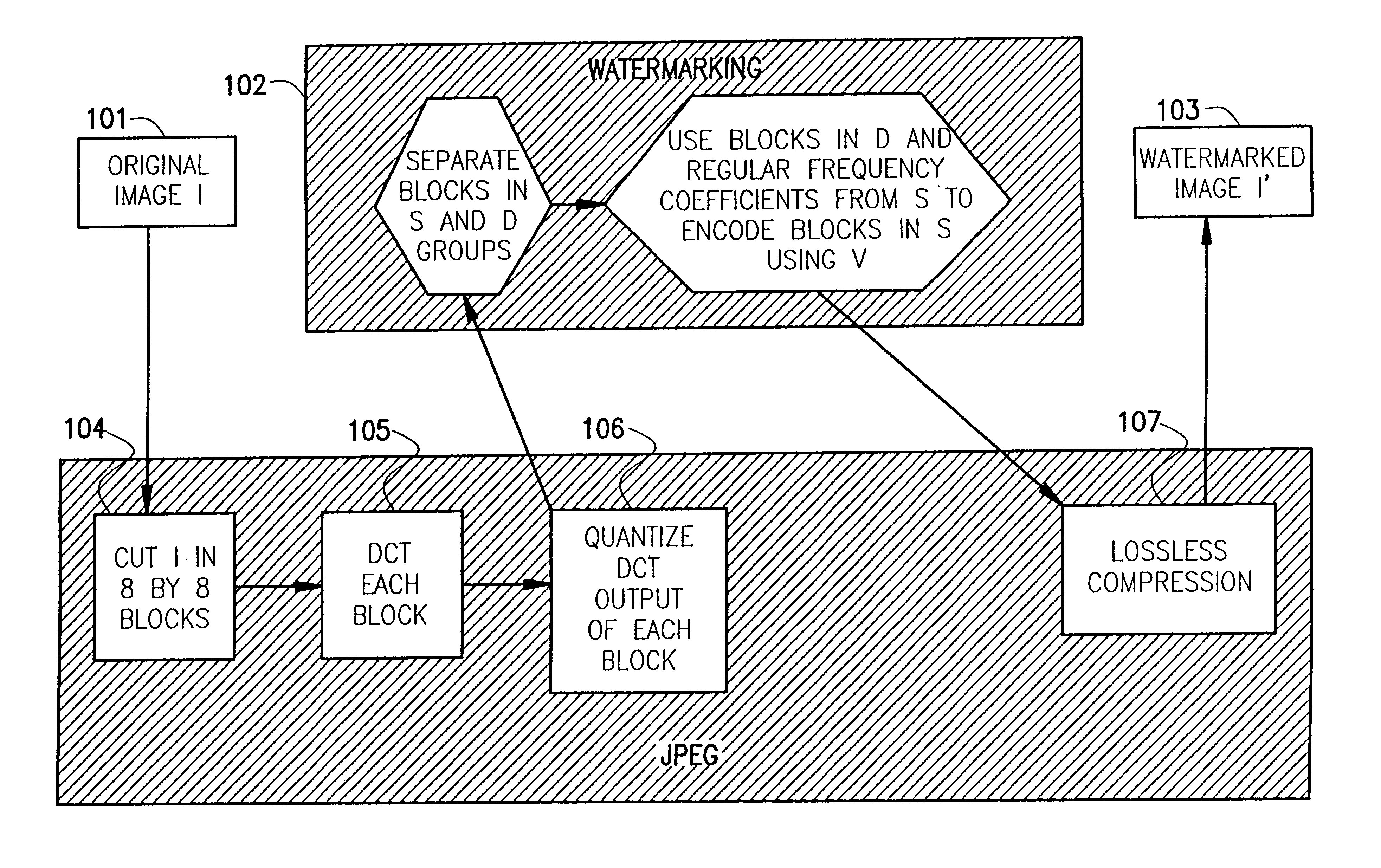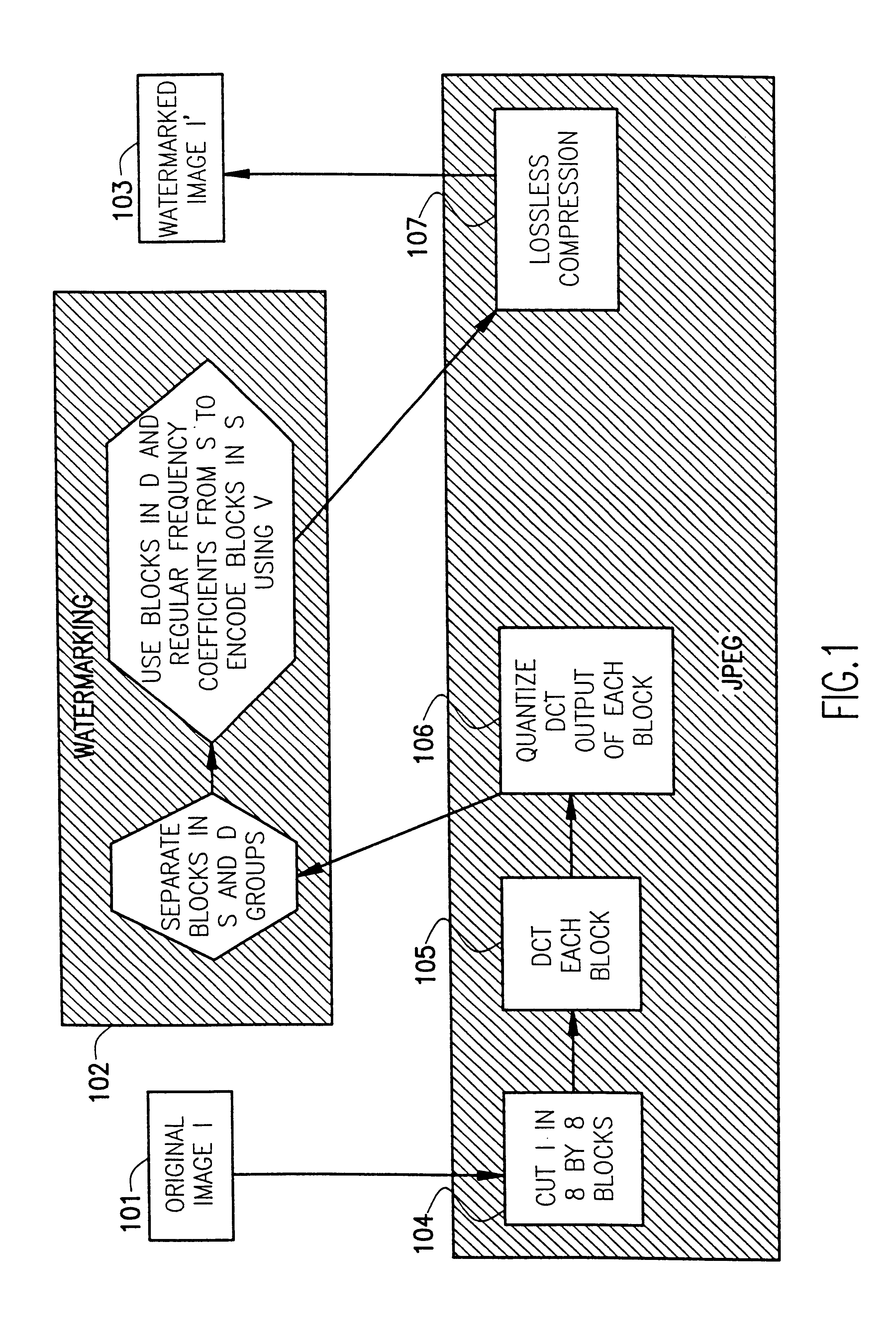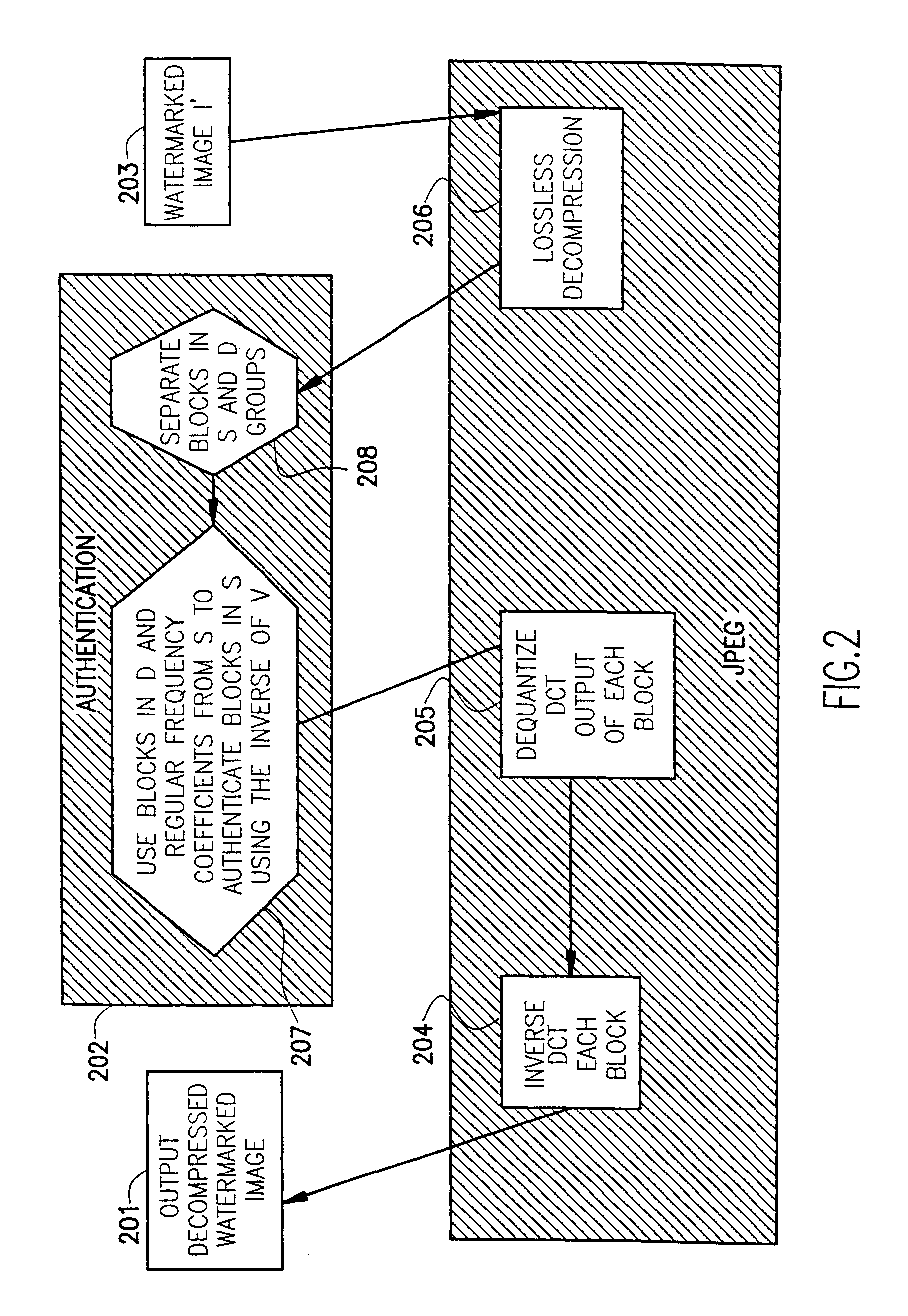Compressed image authentication and verification
- Summary
- Abstract
- Description
- Claims
- Application Information
AI Technical Summary
Problems solved by technology
Method used
Image
Examples
Embodiment Construction
In order to illustrate the novelty of this invention we propose doing so in full generality, i.e., without the need to specifically use the JPEG compression format. First, a fragile watermarking for uncompressed data is where an uncompressed image is given by a sequence of numbers (often binary numbers or bits, but we will say numbers for more generality), where blocks of numbers are associated to each pixel. The numbers attached to each pixel have a different level of significance. Accordingly, an invisible watermark will consist in a machine recognizable modification of all or part of the least significant numbers. The watermark can be made image dependent by letting this modification depend on the most significant numbers and choosing this dependence to be encrypted for better protection. A lossy compressed image is also given in the form of a string of numbers (sometimes mixed with format instructions, but we can ignore those in the present discussion), but now the numbers all h...
PUM
 Login to View More
Login to View More Abstract
Description
Claims
Application Information
 Login to View More
Login to View More - R&D
- Intellectual Property
- Life Sciences
- Materials
- Tech Scout
- Unparalleled Data Quality
- Higher Quality Content
- 60% Fewer Hallucinations
Browse by: Latest US Patents, China's latest patents, Technical Efficacy Thesaurus, Application Domain, Technology Topic, Popular Technical Reports.
© 2025 PatSnap. All rights reserved.Legal|Privacy policy|Modern Slavery Act Transparency Statement|Sitemap|About US| Contact US: help@patsnap.com



